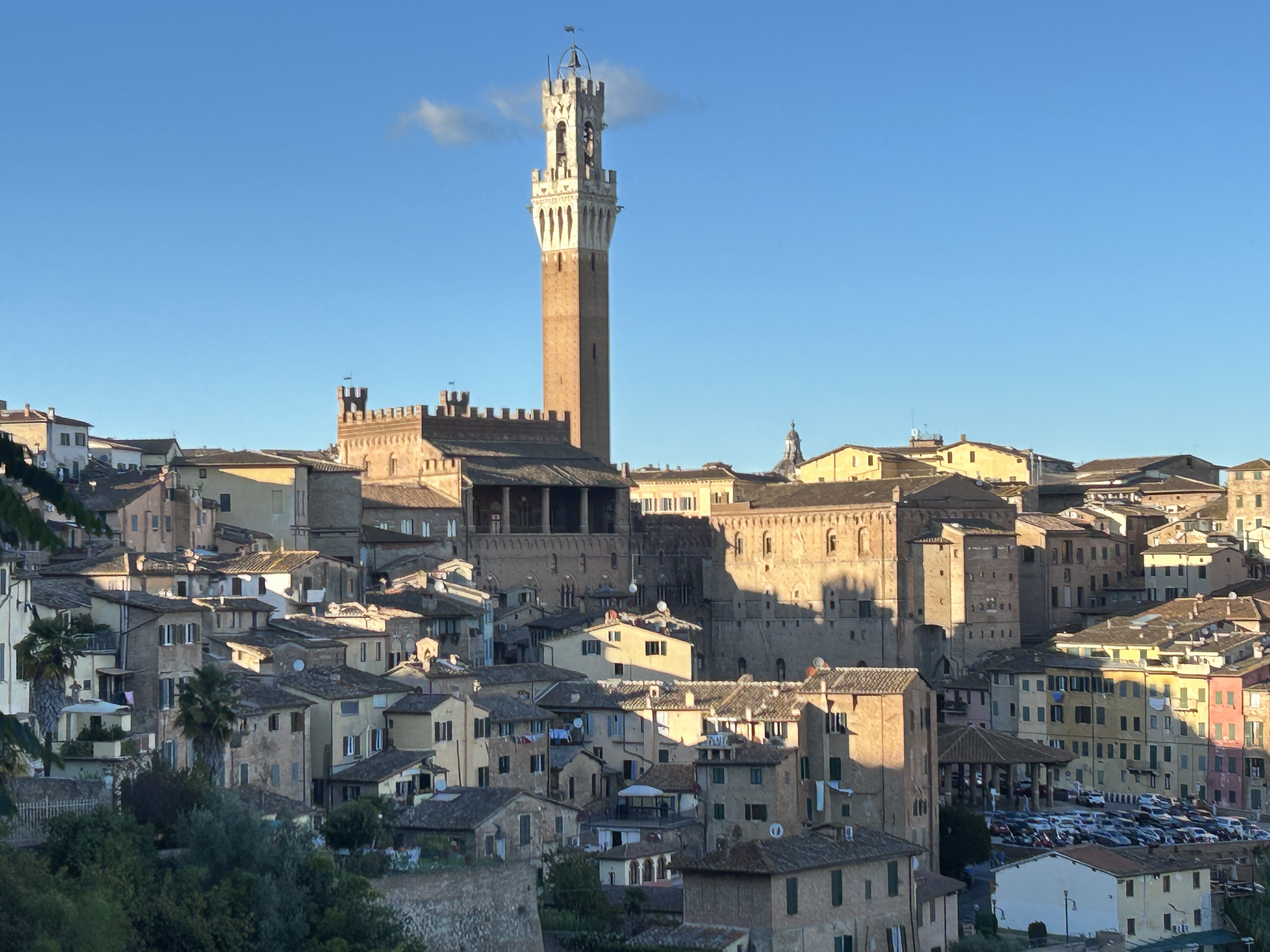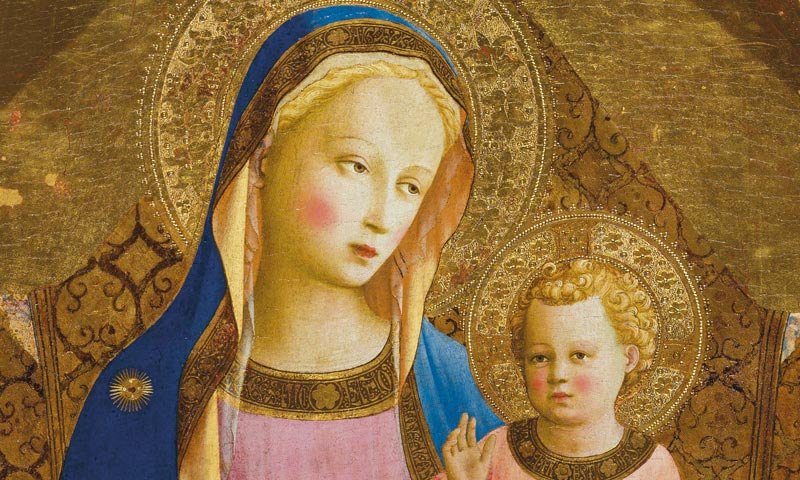Asciano
Asciano , located 45 kilometers from Cortona in the direction of Siena, has a lot to offer. Not only the center of the old town, but also the Abbazia di Monte Oliveto Maggiore (10 km south) make for a day trip. Asciano is also located at the foot of the Crete Senesi , one of the tourist showpieces of Tuscany. They are the setting for the international cycling classic ‘Strade Bianche’, every year at the beginning of March.
City centre
After leaving our car in the parking lot just outside the city walls (from around 1350), we enter Asciano through the Porta Senese :
A little further on the left we visit the Palazzo Corboli . The Bandinelli family ordered beautiful frescoes with a moralizing message painted in the 14th century . (Comparable to the fresco of Good and Bad Government in the Palazzo Pubblico in Siena).
In the Aristotle Hall (the reception area for medieval visitors), the philosopher urges the viewer to pursue the Cardinal Virtues. To the left, the fresco of the Judgement of Solomon is intended to reinforce this message.
On the other wall you are warned if you do not behave properly:
A man, pursued by Death (unicorn), indulges too much in the many pleasures (fruits) of life (tree), and does not realize the danger beneath him: the Day and the Night (gnawing animals) and Hell (dragon).
The palace also houses the Museo Archaeology and Art Sacra . In the archaeological section you will find a collection of finds from Etruscan tombs in the neighberhood.
The religious art section features paintings from the 14th century .
The Birth of Mary (Maestro dell’Osservanza)
With a growling stomach we continue on the Corso Matteotti . On the way we come across a number of local, but “very hard and very mature” cheeses:
In order not to bite our teeth we walk a little further to the cozy central square . A number of bars and a panificio ensure that you do not have to die of hunger….
With a full stomach we make our way to the other end of the old part of Asciano , to the Basilica di Sant'Agata . This church was built in the early 11th century.
Inside you will discover (partial) medieval frescoes and a baptismal font from the early years of the church:
We explored some of the highlights of Asciano , but there are undoubtedly more hidden gems to discover in the old town centre !
We would like to give another tip to lovers of classical music: the Flemish conductor Philippe Herreweghe organizes every year in Asciano the prestigious 'Collegium Vocale Crete Senesi music festival'. Dates for this year: 27 July – 1 Aug.
Crete Senesi and the Strade Bianche
We pick up our car at the parking lot and take the Via Lauretana Tuscany (SP438) towards Taverne d'Arbia .
After just a few kilometres, a beautiful panorama of gently rolling hills opens up. In spring they are bright green, in summer they have a palette of 50 shades of gold… This is the typical landscape of Tuscany from the travel brochures, which so many tourists have fallen madly in love with: wheat or sunflowers on the slopes, large farms and slender cypresses on the tops of the hills.
In your dreams, you could easily trade in your shabby car for a Vespa… The brave among us can even venture out on a bike. But beware: there are three ways to die: overheating, dehydration, or being run over by assertive Fiat 500 drivers…
So it is best to leave the cycling to professionals. At the beginning of March each year, the Crete Senesi is the setting for the international UCI cycling race “ Strade Bianche ”. The race starts and finishes in Siena, and winds its way through the Tuscan countryside for over 200km, of which around 80km is on unpaved gravel and sand stretches (' strade white ').
The riders eat mostly dust…, and dust…, and dust…..
One of the most famous strade starts on the SP438 that we are following. The official name of the stretch is 'Monte Sancte Marie', but is now famous as the ' Settore Fabian Cancellara ', after the Swiss rider who could win the race three times.
Site Transitory
We continue on the SP438. Near Mucigliani , a beautiful walk starts to the Site Transitoire. This is freely accessible and is hidden in a deserted landscape.
French artist Jean-Paul Philippe created this installation in 1993. It is made of Etruscan volcanic stone and represents a chair, a couch and a window. The whole has a magical, mysterious character…
Abbey of Monte Oliveto Maggiore
At the beginning of the 14th century , three Sienese merchants exchanged their dissolute existence for a way of life according to the rules of Benedict and founded this abbey, about ten kilometers south of Asciano .
The abbey is world famous in Italy for its cloister with thirty-six frescoes, dealing with the life of this saint. Some were painted by Luca Signorelli , others by Il Sodoma.
Take your time to admire the works of art in all their details!
Asciano and surroundings: another example of Tuscany as a perfect blend of nature and culture, past and present!

























